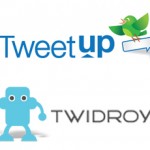 Mountain View, California — Google is already a prominent player in display advertising and is poised to grab consumers’ clicks with paid search campaigns in coming years, but the search giant envisage strong potential in the display ad network. Now the Mountain View, Calif., search engine behemoth is venturing to capitalize on the power of its display properties YouTube, Gmail, Google Maps, Google Books and Google Finance by expanding the Google Display Network, reports AdAge.
Mountain View, California — Google is already a prominent player in display advertising and is poised to grab consumers’ clicks with paid search campaigns in coming years, but the search giant envisage strong potential in the display ad network. Now the Mountain View, Calif., search engine behemoth is venturing to capitalize on the power of its display properties YouTube, Gmail, Google Maps, Google Books and Google Finance by expanding the Google Display Network, reports AdAge.
Nevertheless, the company has amassed or built a huge array of assets by buying smaller companies, and sit on a mountain of cash, which the search engine giant clearly views display and rich media (across PC, mobile and maybe TV) as helping to power its next phase of revenue growth.
In a report from AdAge, Google’s future looms in the past, provided it can find the inventory that it needs. Display advertising, perhaps the oldest, most generic of all methods of monetizing the Internet is where Google intends to grow beyond YouTube across its various properties including potentially, Google Maps and Gmail:
But perhaps the more remarkable approach on display was [Google VP Neal] Mohan’s presentation of what he called the Google Display Network, which included YouTube as well as Google properties Google Finance, Google Maps, Google Books and even Gmail. Mr. Mohan did not disclosed details of what a display unit might look like in Gmail, but a company insider said it has yet to figure out the specific ad requirements against those properties. Google Finance, for example, did not initially feature advertising, but it now runs rectangle-sized ads.
The company controls some 25.8 billion impressions a quarter throughout its networks, giving it the page-views it needs to monetize if it intends to spread out its display advertising clout. Google’s calls the strategy the “Google Display Network.”
With the updated Google Display Network, advertisers will be able to attract consumers with rich-media display units on several of Google’s properties. While Google is best known among businesses for its AdWords and PPC paid search platforms, it has been making big strides towards entering new markets. While many of its sites already have room for display units, some popular ones, such as Gmail and Google Finance, do not.
Nothing of course has been formally announced but Google’s Mohan phrased the opportunity at a “press briefing,” which suggests these ideas are fairly developed internally, like this: “Display is truly at a tipping point, we think it can be substantially larger than the $20 billion it is today, whether [it’s] $40 billion, $60 billion, or $80 billion [remains to be seen]. But there are a lot of challenges that remain.” Google intends to address those challenges by shortening the advertising cycle, cutting down the time lag from the finished creative work to a live advertisement, among other things.

Google anticipates to simplify the process of purchasing display ad space with its new network. “Our publishing partners asked us to help them build out better display buying tools,” Mohan, told AdAge. “They wanted more control, more streamlining, and that is what we are giving them.”
In a May blog post, the company presented a overview of their tools to help marketers see improved results on the platform. From the DoubleClick Ad Exchange, which enables users to make real-time bids on display ad space, to view-through conversion reporting, Google said it wanted to offer features to promote its “vision” for advancing display ads as a marketing tool.
Businesses are currently experiencing what comScore calls a “strong resurgence” in the display ad market. Creative innovations, such as video and games, are leading the growing marketing platform. Rich-media display ads currently account for 40.3 percent of all online banner impressions.
The long term impact of this move by Google hinges on the company’s ability to grow its total impressions per quarter. It is generally speculated that the much rumored “Google Me” social network could be a play to fix that problem. But for the moment that remains speculation.


